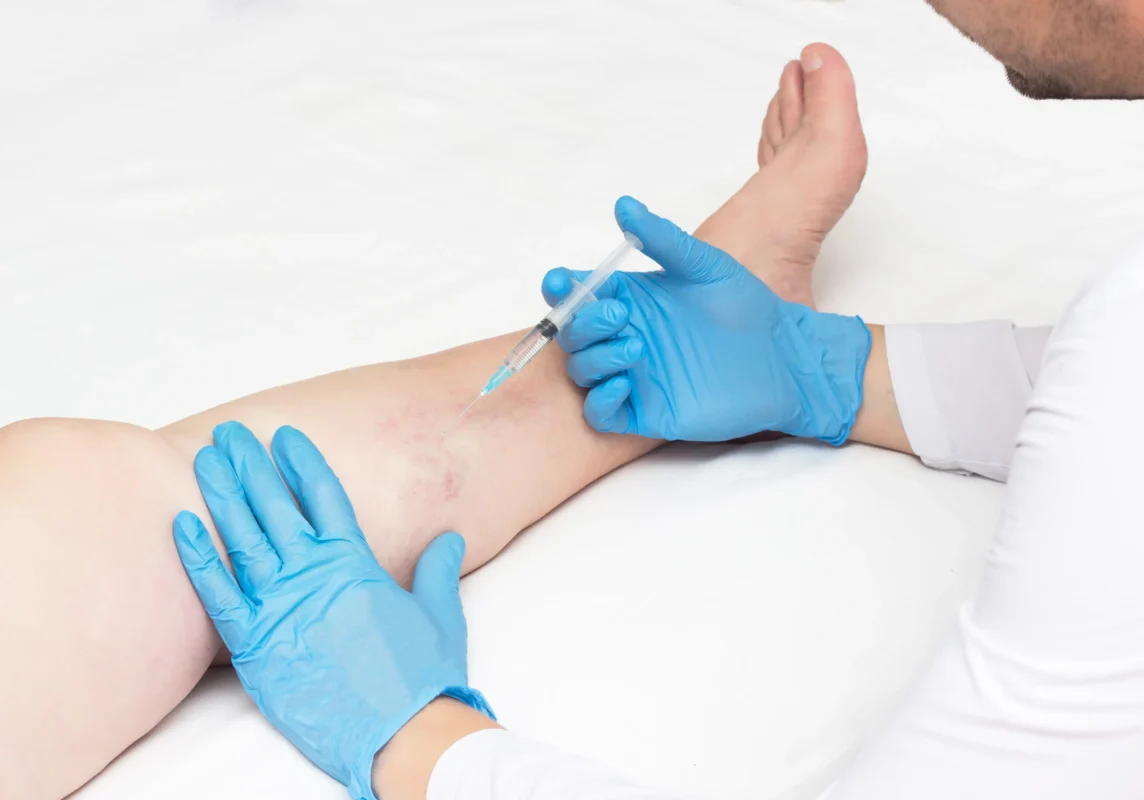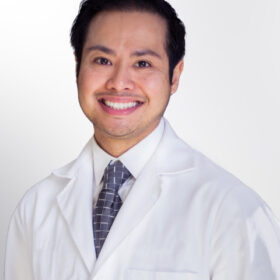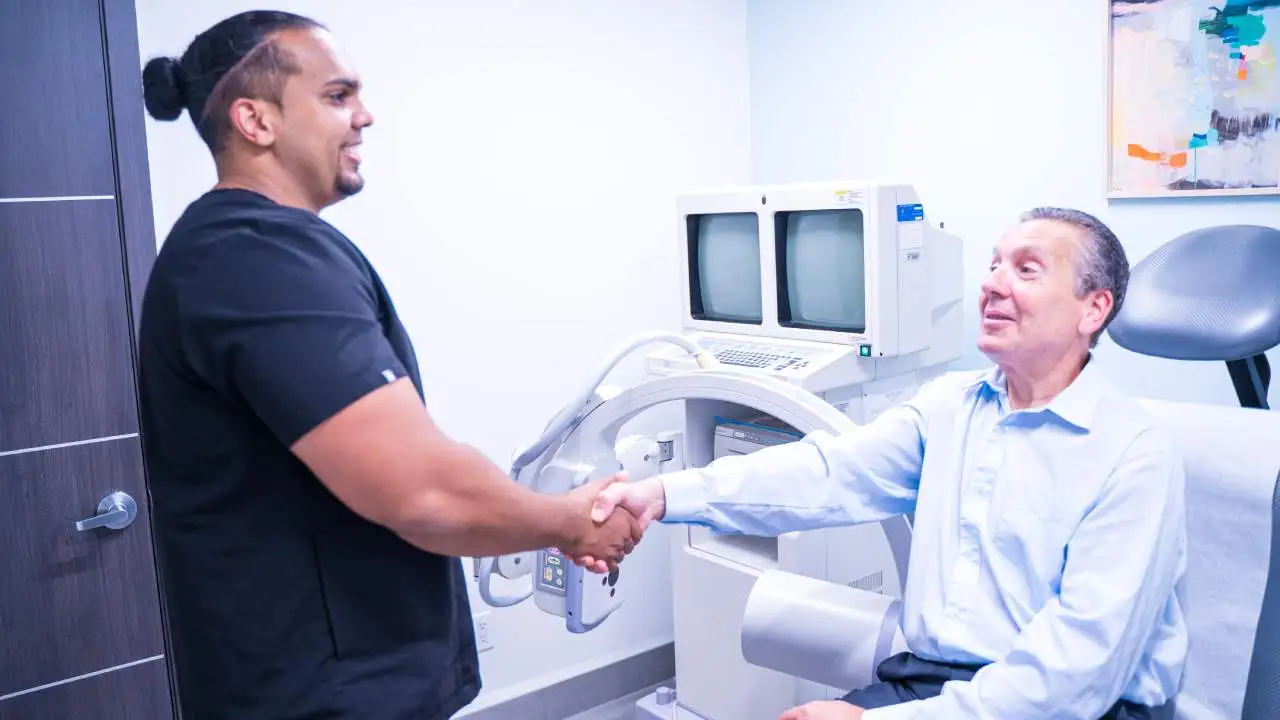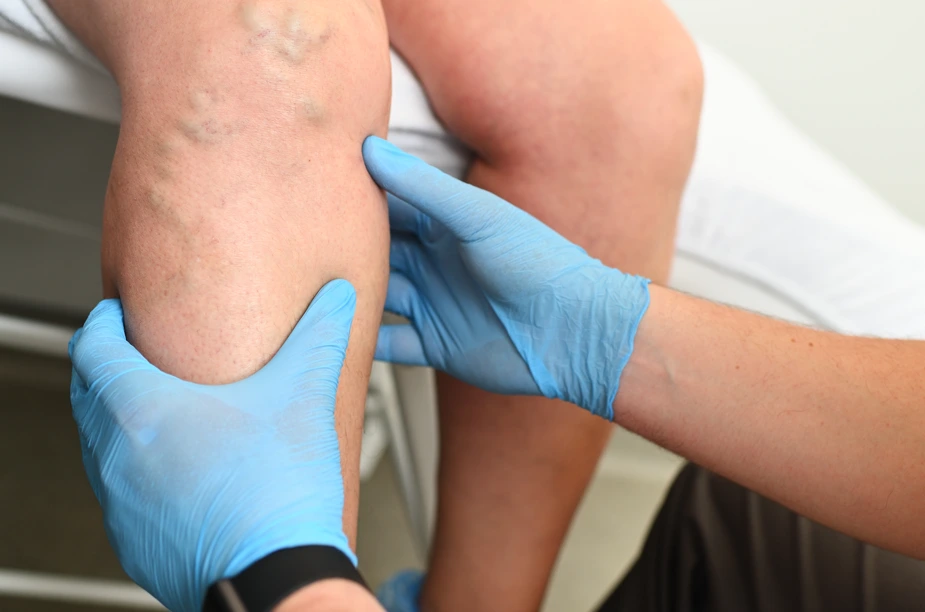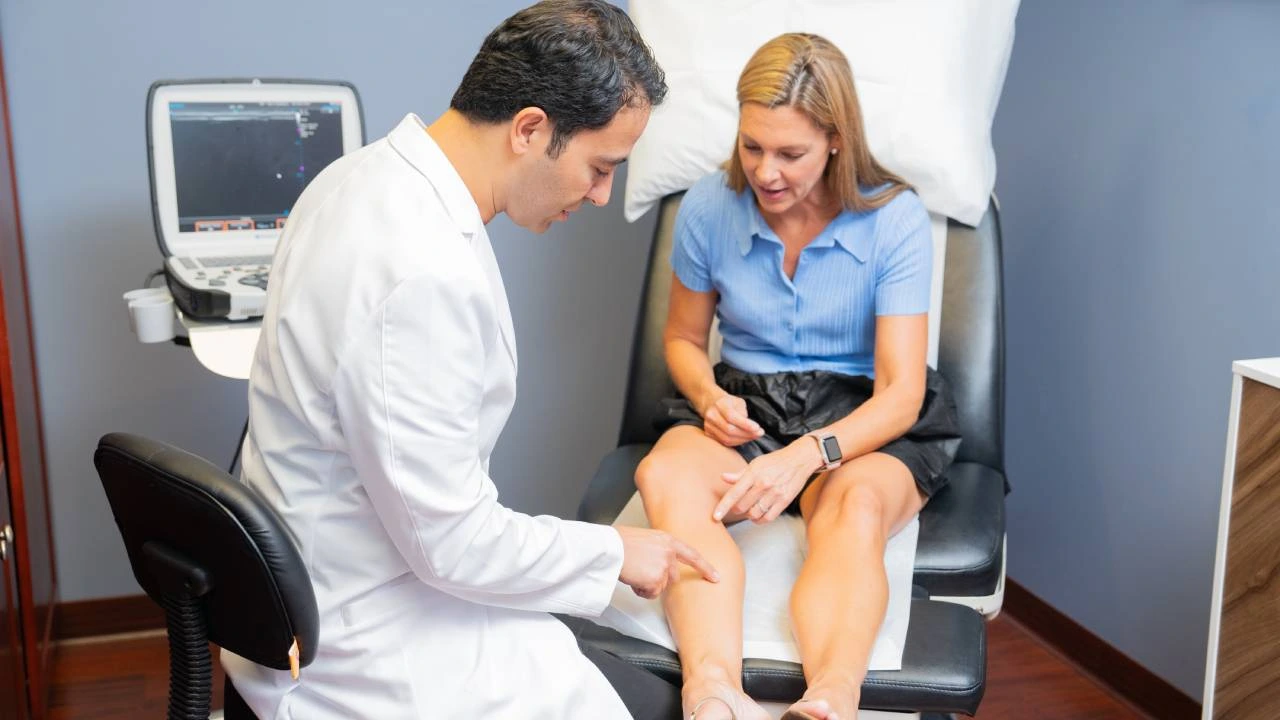Minimally Invasive Treatments for Varicose Veins
There are many different ways to treat varicose veins, and the latest treatments are minimally invasive. This means that they don’t require surgery and have a shorter recovery time. The most common minimally invasive treatments are radiofrequency ablation, endovenous laser ablation, and VenaSeal. Your vein doctor will carefully evaluate your legs, administer ultrasound scans to diagnose the root cause of varicose veins, and curate a personalized treatment plan.

Vein Treatment Clinic is a group of state-of-the-art vein centers across the United States. We have offices in New York, New Jersey, California, Long Island, and Maryland. Our Maryland vein treatment clinic is just outside of Washington, DC. Our board-certified vein doctors use the most effective techniques to diagnose and treat varicose veins and underlying chronic venous insufficiency, the root cause of most vein problems.
Below, we describe the best minimally invasive treatments for varicose veins.
Radiofrequency Ablation
The latest treatment for varicose veins is radiofrequency ablation. This is a minimally invasive procedure that is used to treat large varicose veins. It involves the use of radiofrequency energy to heat the veins and cause them to collapse. This procedure is usually done in an outpatient setting and does not require the use of general anesthesia.
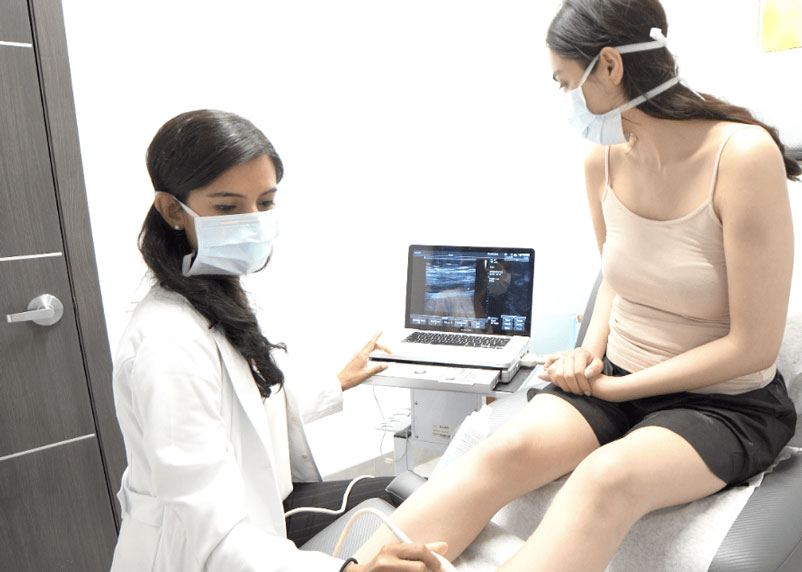
Radiofrequency ablation is usually performed using local anesthesia. A small incision is made in the skin and a catheter is inserted into the vein. The radiofrequency energy is then delivered through the catheter to the vein. The heat from the energy causes the vein to collapse and the blood flow to be redirected to other veins.
Radiofrequency ablation is typically used to treat the saphenous vein, which is the largest vein in the leg. This vein is responsible for a large portion of the blood flow from the leg. When this vein is damaged, it can cause a number of problems, including pain, swelling, and ulcers.
Endovenous Laser Ablation
Endovenous laser ablation uses a laser to heat the vein and make it collapse. This is usually done with a local anesthetic, and the procedure takes about 30 minutes. Endovenous laser ablation is performed by inserting a small laser fiber into the vein. The laser is then activated and the fiber is slowly withdrawn while the laser heats the vein. This process seals the vein and prevents future blood flow.
This treatment is often used for patients who have chronic venous insufficiency. This condition occurs when the vein valves are not working properly and allow blood to pool in the leg. This can cause the veins to become enlarged and twisted. Endovenous laser ablation can help to improve the function of the valves and reduce the appearance of the varicose veins.
VenaSeal
VenaSeal is a new treatment that uses a medical adhesive to seal the vein. VenaSeal is a minimally-invasive procedure that uses a medical adhesive to close off the affected veins. This treatment is performed by a vascular surgeon and does not require the use of tumescent anesthesia, which is often used in other treatments for varicose veins, such as endovenous laser ablation and radiofrequency ablation.
The VenaSeal procedure is performed by first making a small incision in the skin over the varicose vein. A catheter is then inserted into the vein and advanced to the desired location. Next, the medical adhesive is injected into the vein through the catheter. Once the adhesive has been injected, the catheter is removed and the incision is closed with a small surgical staple.
The VenaSeal procedure is typically performed on an outpatient basis and does not require the use of general anesthesia. The main advantage of this procedure over other treatments for varicose veins is that it is minimally-invasive and does not require the use of tumescent anesthesia, which reduces post-treatment swelling and discomfort. There are also no significant side effects associated with this procedure.
ClariVein
ClariVein is a catheter-based procedure that uses a rotating mini-motor to mechanically disrupt the venous walls. This results in the varicose veins being obliterated and dissolved. The procedure is effective for large varicose veins, and has a number of advantages over endovenous laser ablation and radiofrequency ablation.
ClariVein is performed using local anesthesia, and does not require sedation or tumescent anesthesia. This results in a shorter procedure time, and a lower risk of complications. Additionally, there is no heat-related damage to the surrounding tissues with ClariVein, which can occur with laser and radiofrequency treatments.
Ambulatory Phlebectomy
Ambulatory phlebectomy is a minimally invasive surgical procedure used to remove varicose veins from the legs. The procedure is performed by making a small incision in the skin over the vein. The vein is then removed through the incision. The incision is then closed with stitches or staples.
Ambulatory phlebectomy is typically performed on veins that are larger than 3 mm in diameter. The procedure is not recommended for veins that are smaller than this. In addition, the procedure is not recommended for veins that are located close to major arteries or nerves. Ambulatory phlebectomy is considered safe and effective. The main complications associated with the procedure are bleeding and bruising — these are minor and resolve on their own.
Conservative Treatments
There are a few different conservative treatments for varicose veins that can help to improve the appearance of the veins and relieve some of the associated discomfort. Wearing compression stockings is perhaps the most well-known and effective treatment, as they help to apply pressure to the leg and improve blood circulation. Regular exercise is also beneficial, as it can help to keep the veins healthy and prevent further damage.
Elevating your legs while sitting down can also help to reduce the appearance of varicose veins, as gravity will help to encourage blood flow back to the heart. Additionally, avoiding long periods of sitting or standing still can also be helpful, as this can put unnecessary strain on the veins. Finally, drinking plenty of water is important, as it can help to keep the blood flowing smoothly and prevent the veins from becoming overloaded.
While there is no cure for varicose veins, these conservative treatments can help to improve the condition and alleviate some of the associated discomfort. The only reliable way to treat varicose veins and underlying venous insufficiency is to consult a board-certified vein doctor near your location.


